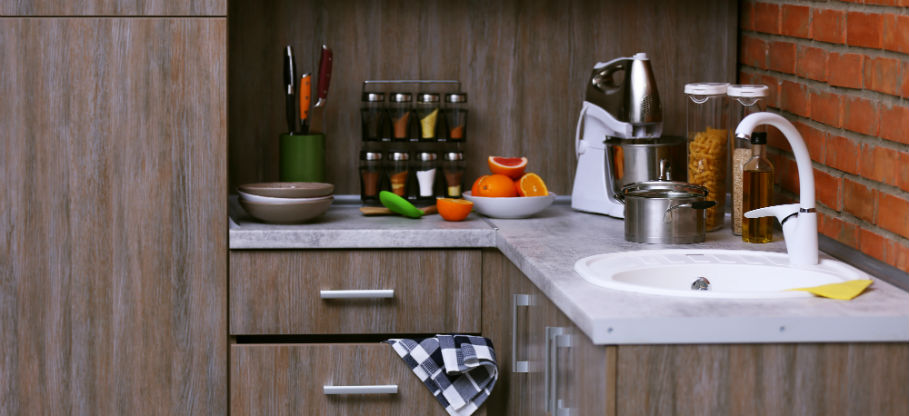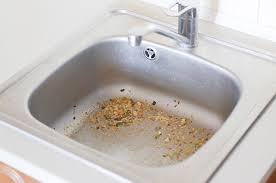On this page in the next paragraph you can get a bunch of exceptional guidance regarding Why Is My Sink Not Draining?.

It's not regular for your kitchen area sink to block several times in one month. If your sink blocks two times a week, there's some difficulty going on.
An obstructed kitchen drainpipe does not simply slow down your jobs, it deteriorates your whole plumbing system, little by little. Here are some typical habits that urge sink obstructions, and also exactly how to prevent them.
You need appropriate waste disposal
Reusing waste is great, however do you pay attention to your natural waste too? Your kitchen area must have two different waste boxes; one for recyclable plastics and one more for organic waste, which can become compost.
Having actually a designated trash bag will certainly aid you and your household stay clear of throwing pasta as well as various other food remnants down the tubes. Normally, these residues take in dampness and end up being blockages.
The mistake isn't from your kitchen sink whatsoever
Perhaps the trouble isn't from your cooking area sink, but the entire drain system. In such an instance, you may discover that other sinks and drains obtain obstructed every other week. You require a professional plumbing service to fix this.
You're tossing coffee away
Used coffee grounds and coffee beans still absorb a significant quantity of moisture. They may seem small sufficient to throw down the drainpipe, yet as time takes place they start to swell and take up more space.
Your coffee grounds must go into organic waste disposal. Whatever fraction leaves (maybe while you're depleting) will certainly be dealt with throughout your month-to-month cleaning.
You have actually been consuming a great deal of oily foods
Your cooking area sink may still get blocked even with organic waste disposal. This may be because you have a diet rich in greasy foods like cheeseburgers.
This grease coats the insides of pipelines, making them narrower as well as more clog-prone.
Use a plunger
Your pipeline wasn't repaired correctly in the first place
If you have actually been doing none of the above, yet still obtain regular clogs in your cooking area sink, you should certainly call a plumber. There may be an issue with how your pipelines were set up.
While your plumber arrives, look for any type of leaks or irregularities around your cooking area pipelines. Don't attempt to deal with the pipes yourself. This might trigger a crash or a kitchen flooding.
Somebody tried to wash their hair in the cooking area sink
There's a right time and area for whatever. The kitchen sink is simply not the ideal place to clean your hair. Cleaning your hair in the kitchen sink will certainly make it clog one way or another unless you utilize a drainpipe catcher.
While a drainpipe catcher might capture the majority of the fallouts, some hairs may still survive. If you have thick hair, this may be enough to reduce your water drainage and at some point form an obstruction.
There's more dust than your pipes can handle
If you obtain fruits directly from a ranch, you may observe more cooking area dirt than other individuals that go shopping from a shopping center. You can easily repair this by cleaning the fruits as well as veggies properly prior to bringing them into your home.You need appropriate waste disposal
My Kitchen Sink Won’t Drain - What Should I Do?
If Your Sink Has a Garbage Disposal...
Turn on the disposal. If the disposal hums and doesn’t turn, then there’s clog in the disposal unit.
Go to your circuit breaker panel, and switch off the circuit breaker to your garbage disposal.
Back in your kitchen, double-check that your garbage disposal is off by trying to turn it on. The disposal should not move, and it should not make any noise.
Lie down underneath your sink so that you can see and access the bottom of the disposal unit. Look for a hole that looks like the head of a hex-head bolt in the center of the unit.
Place an Allen wrench inside this hole and turn it from side to side until you feel a decrease in resistance and are able to rotate the wrench completely in a single direction. This action rotates your disposal’s blade manually.
Put the wrench aside, and press the disposal unit’s reset button or switch.
Flip your garbage disposal’s circuit breaker switch back on, and turn on the unit to see if the obstruction has cleared. If it hasn’t, repeat the steps above until the obstruction is removed.
How to Unclog a Kitchen Sink Drain
If you have a double bowl sink, seal one side of the sink with an airtight lid or a second plunger before plunging the other side. Otherwise, you won’t be able to create adequate suction.
Place the cup of the plunger completely over the drain opening.
Turn on the faucet, and let the water run until it completely covers the cup of the plunger.
Start plunging by pushing the plunger down and pulling up again in order to build up suction. Make sure that the edges of the plunger stay in contact with your sink, or else you’ll lose the suction.
If you have trouble forming a seal between your sink and plunger, add petroleum jelly to the mouth of your plunger, and try again.
Plunge about five or six times before removing the plunger to see if water starts to drain properly. In some cases, you’ll even be able to feel the clog become dislodged while you plunge because suddenly there will be much less resistance. Repeat the plunging process until the clog clears.
Once water is draining properly again, run hot water down the drain for 5 minutes to help clear away grease, grime, and debris from the clog. https://www.plumbingjoint.com/blog/2019/august/my-kitchen-sink-won-t-drain-what-should-i-do-/

My Kitchen Sink Won’t Drain - What Should I Do?
If Your Sink Has a Garbage Disposal...
How to Unclog a Kitchen Sink Drain
https://www.plumbingjoint.com/blog/2019/august/my-kitchen-sink-won-t-drain-what-should-i-do-/
I ran across that content about Why Is My Sink Not Draining? while surfing around the search engines. Remember to take the time to share this blog post if you liked it. Thank-you for your time invested reading it.
Rates